Head lights and parking lights Mk1 and Mk2 68 and 69 Parking lights 1970-on Instruments Switch Connections
Head lights and parking lights Mk1 and Mk2 68 and 69
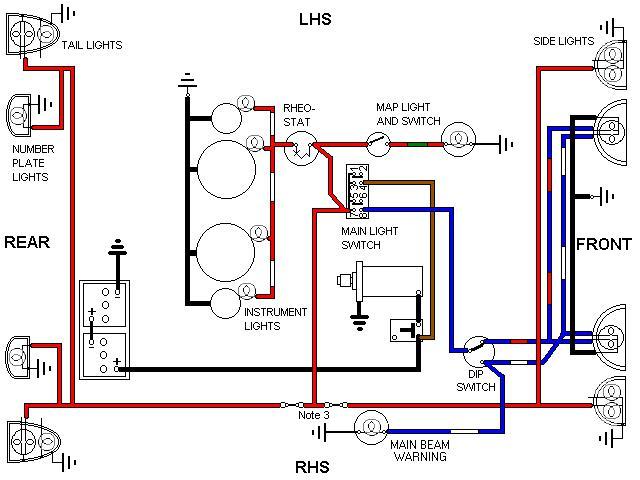
Notes:
1: Blue/white is main beam, blue/red is dipped beam.
2: Parking lights were unfused on Mk I cars.
3: Mk II cars for 68 and 69 had in-line 10A fuses for the parking lights (one for the front and one for the rear), fitted at the bullet connectors where the main and rear harnesses joined together.
4: Dip-switch moved from floor to column stalk for North America in 1968.
5: Mk1 cars had a map light available when the parking lights were on. Mk2 cars for 68 and 69 may have had a courtesy light operated from door switches as well as the map light.
6: Mk2 LHD cars up to 1971 have a panel light switch on the steering column in place of a rheostat on the dash.
The separate front and rear fuses for the parking lights in 68 and 69:
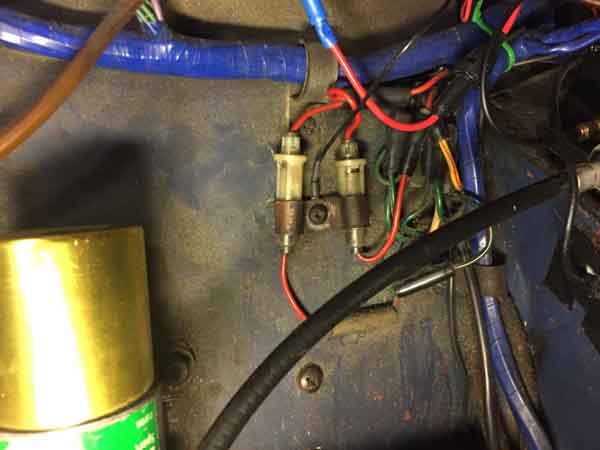
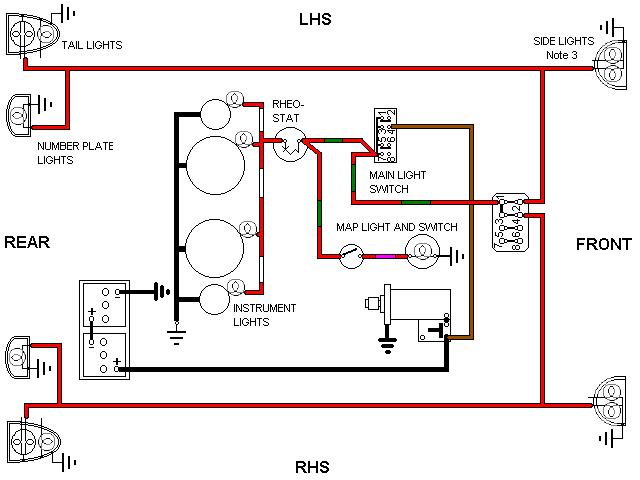
- Headlamp and instrument light wiring is much the same as for earlier cars, except that the dip-switch has now moved to the column stalk for all markets.
- From 1970 the parking lights were fused from the main fuse box, one fuse for each side. At least that was the intention, but with four separate connections to the fusebox they can be cross-connected so that one fuse feeds right front and left rear, and the other fuse left front and right rear.
- Also from 1970 North America used a dual-filament 21w/6w bulb for the indicators and the parking lights behind an all-amber lens, and this continued with rubber bumpers.
- 1970 (all) and 1971 (UK only) models may have had a courtesy light operated from the door switches as well as the map light and switch, now available all the time. After that all models had the courtesy light controlled from door switches only i.e. no map light.
- 1971 models on had boot (roadster) and load-space (GT) courtesy lights.
- 1970 LHD cars have a panel light switch on the steering column, reverting to a rheostat on the dash for 1971.
- Rubber bumper models (and North American 1974 models with the split rear bumper) have the number plate lights mounted on the number plate backing plate and wired earths back to the bullets for the reversing lights.
- RHD rubber bumper cars had the front parking lights inside the headlights and used the same wired earth, the indicators are mounted in the bumper and also have a wired earth. North American had dual filament bulbs behind an all-orange lens for both parking lights and indicators.
- North American cars with side-marker lights therefore had three lamp units needing an earth on each side, and with the main harness having two earth wires by the right-hand headlight (one from the earthing point the other to the left-hand headlight) means there are five earth wires to be connected together by the right-hand headlight, and used a 6-way bullet connector. The left-hand side used a 4-way.
- 1977 and later models have the main lighting switch on the steering column cowl.
- 1977 and later models had dash switches (not the main lighting switch) and heater controls illuminated at night, together with the gauges, clock etc.
Instruments (in most cases) have a single red/white wire going to the bulb holder. The earth is picked up from the instrument case, there should be earth wires under the clamp screw or going to a spot-welded spade on the back of the case (later tachs). However a replacement harness came with two-wire plastic holders that took push-in wedge bulbs. UK CB tach and speedo have the illumination bulb at the top and the main-beam and ignition tell-tales at the bottom:
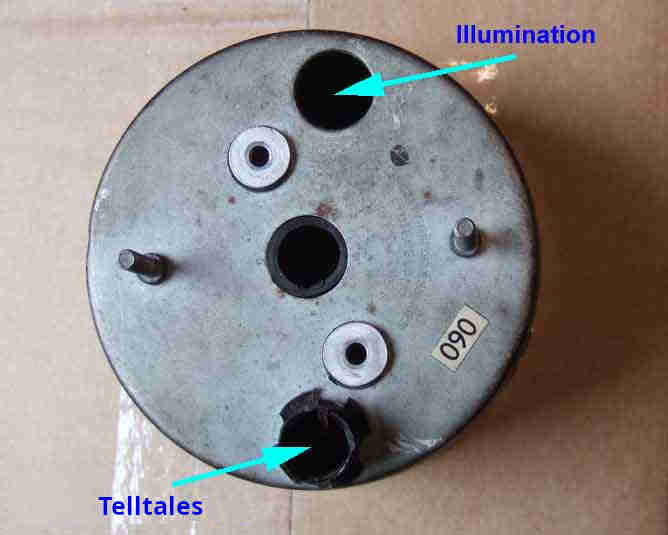
The illumination bulb holder is the claw type that can be difficult to remove and refit, the tell-tales have a cylindrical bulb-holder that pushes into a plastic sleeve, the front of which has the red and blue 'jewel' in the dial face.
UK RB speedo and tach only have illumination bulbs, speedo (as here) still at the top but tach now at the bottom. North American Mk2 are similar, details here:
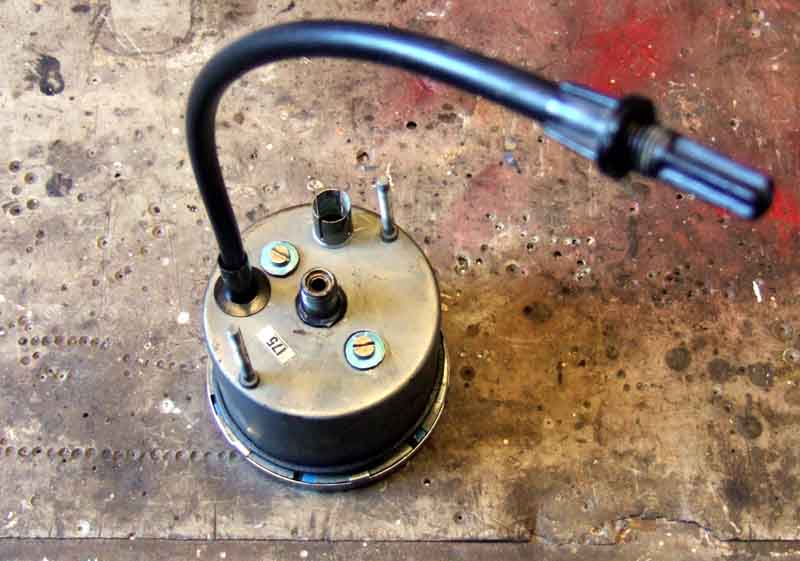
Fuel gauge and dual gauge are similar:
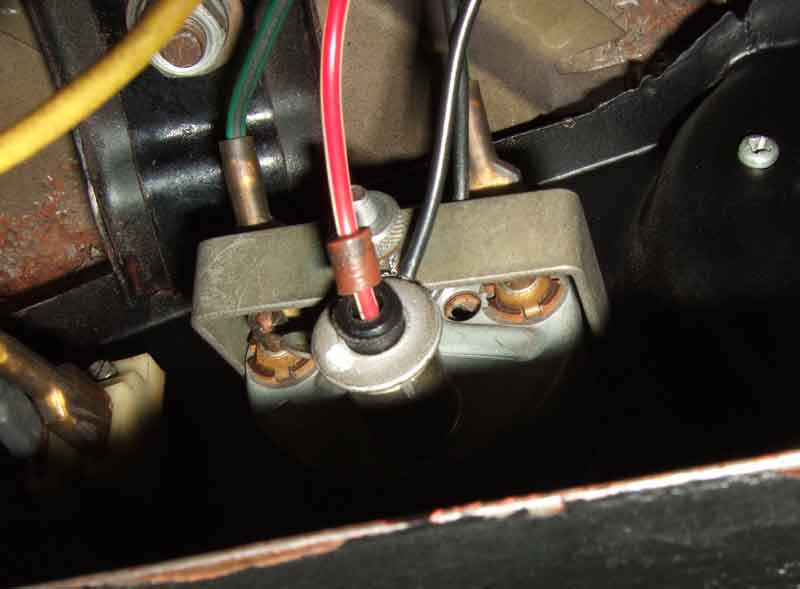
However a replacement harness for a 1980 came with holders for capless bulbs, which is probably what is shown here. These are plastic so have an earth wire as well as they cannot pick up an earth from the instrument case, which is now superfluous on all instruments except the tachometer: (Mark Garrett)
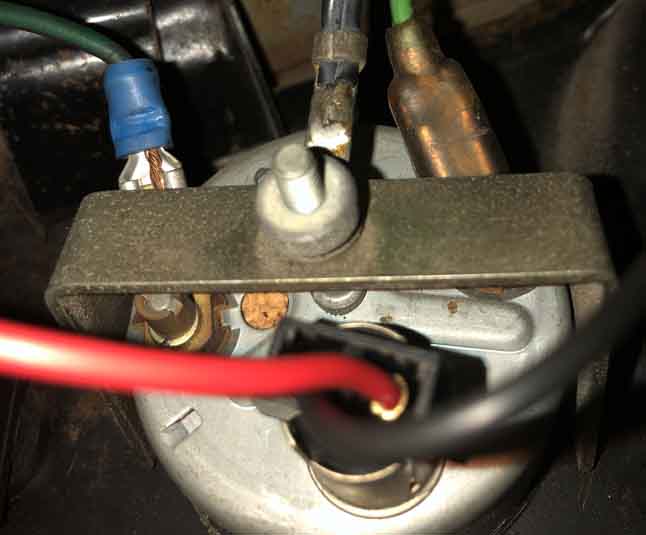
MES E10 (screw bulb) claw-type holder for 4" speedo and tach illumination:
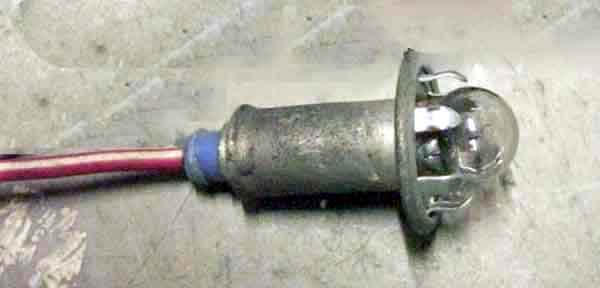
Although these take a screw bulb the holder is not fully threaded but just has these two bumps on each side:
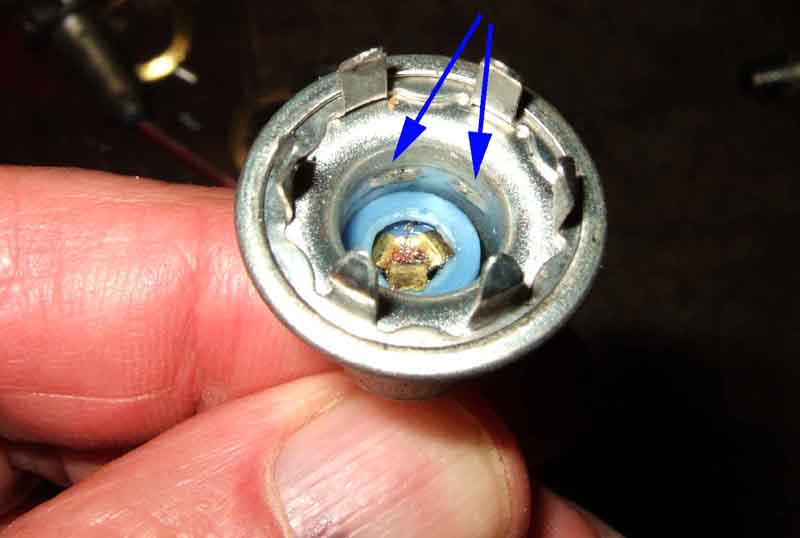
Visible as indentations on the outside. The claws make it a bit of a fiddle to screw the bulb in as you are pushing the centre contact of the holder back against spring-pressure as you screw the bulb in - this one is only partially fitted. If you hold the holder in one hand with the wire pulled back and gripped between the second, third and forth fingers and palm while pushing the holder forwards with thumb and fore-finger to retract the contact pad, the bulb screws in more easily:
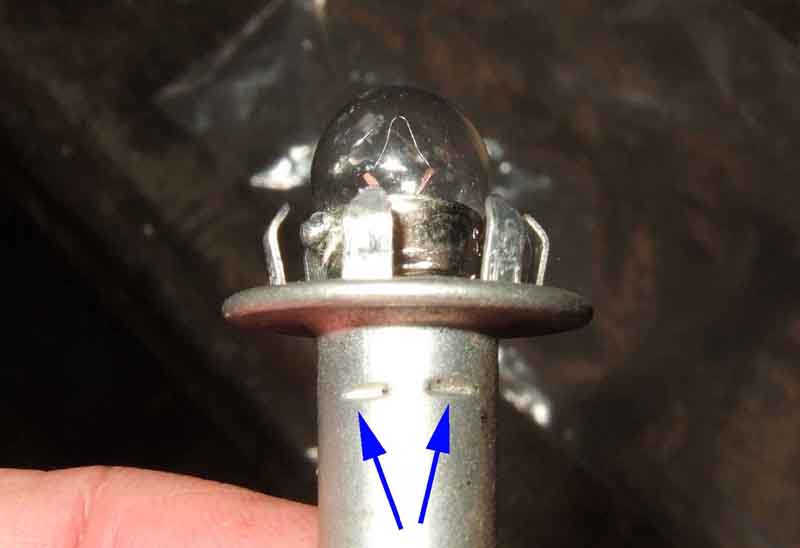
MES E10 (screw bulb) tube-fitting for 80mm speedo and tach as well as fuel and dual gauges, easier to screw in than claw holders:
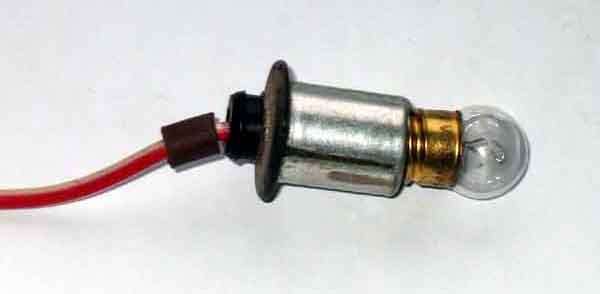
The wire goes through a plastic inner in the holder and the stripped end is clamped in a folded and crimped contact pad for the pointy end of the bulb. There is a spring that pushes the plastic inner and contact pad against the bulb when it has been screwed in, but this can make it difficult to screw a bulb in and I have had the glass part break free from the threaded body of the bulb in the past. If you gently pull the wire out of the back of the holder a little way, against spring pressure, the bulb is easy to screw in and when you release the wire it makes good contact with the bulb. Don't pull on the wire too hard though or you can pull it out altogether:

V8 and RB have slimmer warning light bulbs and holders, the fitting is a type of bayonet but the bulb can be fitted and removed by pushing and turning 90 degrees in either direction:
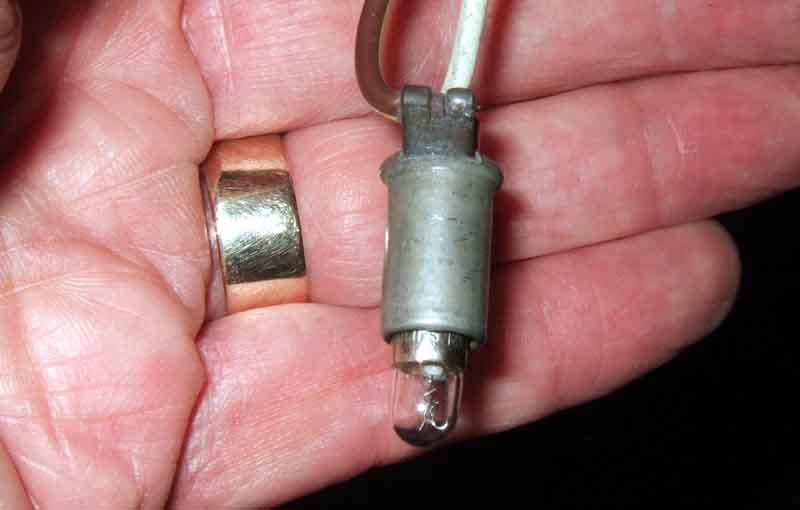
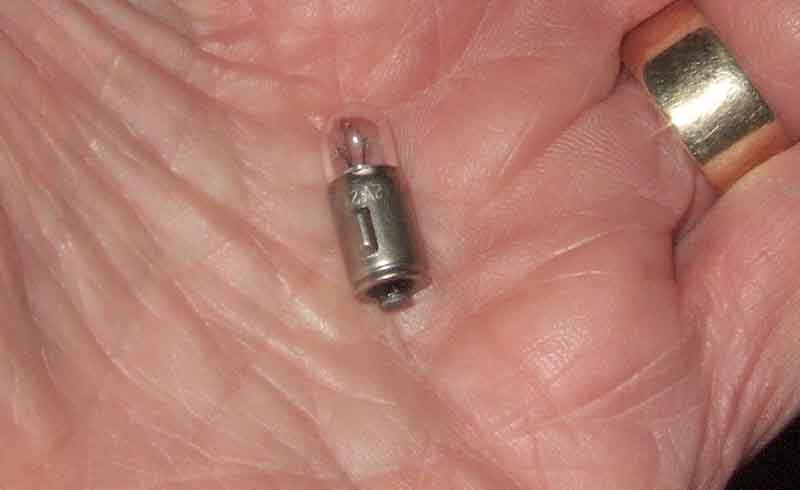
Alternative BA9 (bayonet) fitting (top) to replace tube-type when I was experimenting with LED illumination:
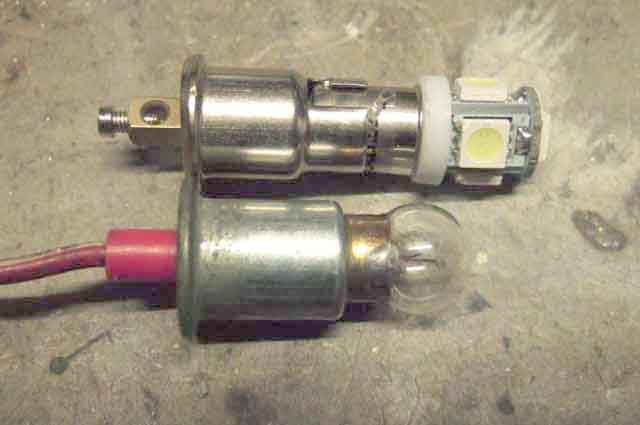
T10 (capless/wedge) holder as received on a replacement harness for a 1980:
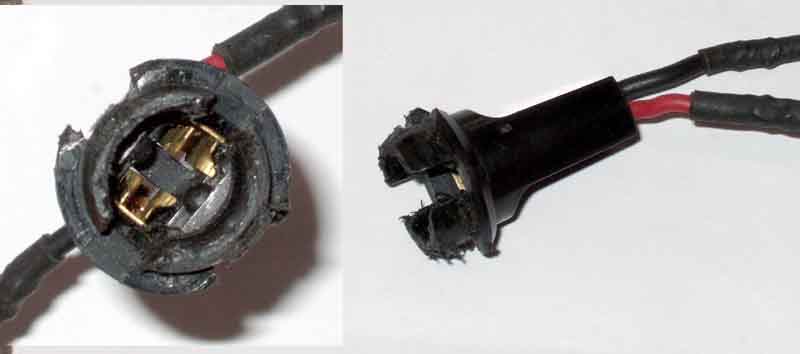
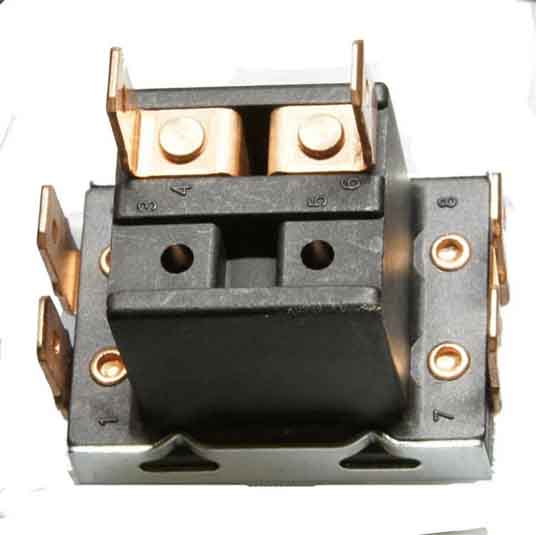
Rocker switch - Blue to 1, Brown to 2, Red/Green to 3:
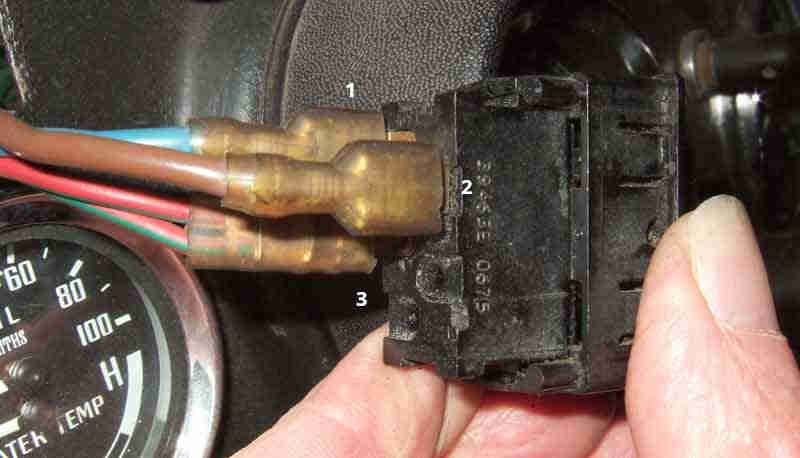
Cowl-mounted toggle switch 77 and later - connections as above: (Moss Europe)
